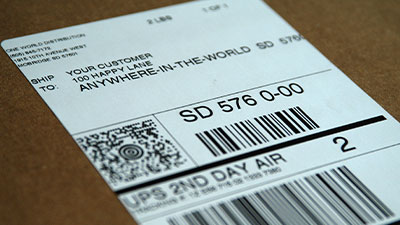Selling overseas sounds like a dream—until taxes turn it into a nightmare.
If you’re a U.S. ecommerce seller shipping internationally, you’ve likely run into one confusing acronym again and again: VAT (Value-Added Tax). Who pays it? When do you have to collect it? Can you avoid it altogether? And what happens if you get it wrong?
In this guide, we’ll break down exactly how VAT works in international ecommerce—no fluff, just the facts that matter to your business. Whether you’re trying to avoid surprise charges for your customers or wondering when you’ll need a foreign VAT number, we’ve got the answers (and some tricks to keep you compliant and competitive).
Let’s start with the basics.
Understanding VAT in Ecommerce
What is VAT?
Value-Added Tax (VAT) is a consumption tax applied at each stage of the supply chain where value is added. It’s different from sales tax, which is only charged at the final point of sale to the consumer.
The Role of VAT in International Ecommerce
In international ecommerce, VAT ensures that tax revenue is collected on goods sold across borders. For example, when a product is sold online and shipped to another country, VAT may need to be charged depending on that country’s regulations.
Purpose of VAT in Ecommerce
VAT helps governments collect revenue from imported goods and services, ensuring fair competition between local and foreign sellers. It also prevents tax evasion by tracking every transaction from production to sale.
VAT vs Sales Tax
While both are taxes on purchases, sales tax is only levied at the point of sale. VAT, however, is collected throughout the production process, making it more complex but also more comprehensive in its coverage.
Understanding these basics can help ecommerce sellers navigate international markets and ensure compliance with various tax codes.
Who Pays VAT for International Orders?
The quick answer: In most cases, the person receiving the goods (the end consumer) pays the VAT when their package crosses a border. This is true whether you’re shipping from the U.S. to Europe or sending products into almost any country with a value-added tax system.
What Happens When You Ship Goods Internationally?
End consumers pay VAT at import:
If your customer is in Germany and you ship from the U.S., German customs will typically charge them local VAT before releasing the goods. This is standard for most cross-border ecommerce.
Each country sets its own rate. For example:
Do Ecommerce Sellers Ever Pay or Collect VAT?
Sometimes, rules require you (the ecommerce seller) to charge and remit VAT at checkout instead of leaving it to your customer. Here’s when that happens:
- Sales thresholds: Many countries set annual sales limits (distance selling thresholds). If your sales to customers in that country go over this threshold, you must register for a local VAT number and start collecting local VAT upfront.
- Marketplace rules: Platforms like Amazon or eBay may require you to collect and remit VAT even if you’re below the threshold, especially after new EU ecommerce rules kicked in during 2021.
- Fulfillment location matters: If you store inventory inside a foreign country (for example, using a fulfillment center in France), local law may require you to register for VAT immediately—no matter how many sales you make.
Quick Example
A U.S. jewelry brand ships a $100 necklace to a customer in Italy.
- If shipped directly from the U.S., Italian customs usually charges the customer about $22 in VAT before delivery.
- If that brand holds stock in an Italian warehouse, they likely need an Italian VAT registration and must collect that $22 from the buyer at checkout and then pay it to Italy’s tax office.
Key Takeaways
- The end buyer typically pays VAT on imported goods unless special rules apply.
- U.S.-based sellers sometimes become responsible for charging and paying foreign VAT based on their setup, sales volume, or marketplace requirements.
- Understanding who pays for VAT and when is crucial for pricing your products correctly and avoiding surprise costs for your customers.
Do U.S. Sellers Have to Pay VAT?
USA sellers pay VAT obligations
U.S. sellers may need to register for foreign VAT numbers and remit collected tax depending on several factors.
When Do U.S. Sellers Need to Register for VAT?
- Sales Thresholds: Many countries have specific sales thresholds that, once exceeded, require foreign businesses to register for VAT. For example, in the EU, each member state has its own threshold.
- Local Fulfillment Centers: If you store goods in a fulfillment center within a country, you might be required to register for VAT in that country.
- Direct Sales: Selling directly to consumers in a foreign country can also necessitate VAT registration.
Examples
- Selling Goods in Germany: If your annual sales to German customers exceed €100,000, you must register for German VAT.
- Using a UK Fulfillment Center: Storing products in the UK means you need to register for UK VAT regardless of your sales volume.
Consequences of Non-Compliance
Failing to comply with foreign VAT regulations can lead to serious penalties:
- Fines: Countries impose fines on businesses that fail to register or pay VAT on time.
- Account Suspensions: Online marketplaces like Amazon and eBay may suspend seller accounts until compliance issues are resolved.
Understanding these obligations is crucial for U.S. companies looking to expand internationally without risking penalties.
Legal Ways for U.S. Companies to Avoid Paying VAT
Emphasize Legal Methods Only
Avoiding VAT as a U.S. company requires a legal approach. Illegal evasion can result in severe penalties, including substantial fines and the suspension of marketplace accounts.
Distance Selling Thresholds
One legal way to avoid VAT is to understand and utilize the distance selling thresholds. These thresholds vary by country and determine when a foreign seller must register for VAT and start charging local VAT on sales.
For example, in the EU, each member state has its own threshold, typically ranging from €35,000 to €100,000. If your sales fall below these thresholds, you may not need to register for VAT or charge it on your products.
Country-Specific Exemptions
Some countries offer exemptions that can benefit U.S. sellers:
- Small consignment exemption: Certain countries exempt low-value shipments from VAT.
- B2B transactions: When selling business-to-business (B2B), VAT may not apply if the buyer provides their VAT registration number.
By leveraging these exemptions, U.S. companies can legally reduce or eliminate their VAT obligations.
Using Third-Party Fulfillment Centers
Another strategy involves using third-party fulfillment centers located within your target markets. This can help minimize import VAT obligations:
- Example: If you use a fulfillment center in Germany for your EU customers, they may handle local VAT compliance, allowing you to avoid direct involvement with VAT registration and remittance.
Legal ways to avoid paying VAT as a U.S. company focus on leveraging distance selling thresholds, country-specific exemptions, and strategic fulfillment center locations. Understanding these tactics can help you navigate international ecommerce without falling foul of tax regulations.
Additionally, it’s important to note that when selling overseas goods directly to customers in the UK, specific VAT regulations apply which could also impact your overall tax obligations.
The Impact of Fulfillment Center Location on VAT Compliance
Why Fulfillment Center Location Matters for VAT
The location of your fulfillment center plays a crucial role in how import taxes (like VAT) are applied. Many small ecommerce brands are surprised to learn that the fulfillment center’s impact on VAT is not just about convenience or shipping speed. It’s a key part of your tax strategy.
How Local Fulfillment Can Reduce VAT Costs
Shipping directly from the U.S. to customers overseas typically means your buyer pays import VAT upon arrival in their country. This can lead to:
- Slower delivery times due to customs clearance
- Unexpected fees for the customer at delivery
- More returns and abandoned carts
Utilizing a fulfillment center within your target market (for instance, a warehouse in Germany for EU orders) provides several advantages:
- Import VAT is paid once, in bulk: When you stock inventory at the local fulfillment center, you handle import VAT upfront on those goods as they enter the country. No extra VAT surprises for each customer order.
- Fewer customs delays: Shipments from local warehouses move faster, since they aren’t treated as “imports” for each sale.
- Happier customers: Buyers see clear pricing at checkout—no surprise tax bills.
The fulfillment center impact on VAT goes beyond logistics. It’s about making cross-border sales smoother for both you and your shoppers. Brands using this approach often see higher conversion rates and fewer headaches compared to shipping every package individually from the U.S.
Do U.S. Companies Need a VAT Number?
Do US companies need a VAT number? It’s a common question for American sellers looking to go global. The short answer: U.S. companies do not get a VAT number from the U.S. government, because the United States does not have a Value-Added Tax system. Instead, American businesses use their EIN (Employer Identification Number) or Tax ID for domestic tax matters.
Do American companies have VAT numbers?
Not in the US. However, if your business sells goods or services abroad—say, to customers in the UK, EU, or Canada—you may be required to register for a foreign-issued VAT number. This typically occurs when your sales exceed certain thresholds or you store inventory in those countries.
- Example: Selling t-shirts online from California to Germany? If your sales pass Germany’s registration limit or you use a local warehouse, German tax law might require your company to get a German VAT registration number.
- Shipping custom wallets from your US shop to Canada? You may need a Canadian GST/HST number instead of a “VAT” but it serves the same purpose.
Understanding Business VAT Numbers and Registration Codes
What is a Business VAT Number?
A business VAT number is a unique identifier assigned to companies registered for Value-Added Tax in countries where VAT is applicable. This number allows businesses to charge, collect, and remit VAT on goods and services they provide.
Typical Formats of VAT Numbers
VAT numbers vary by country but generally include the country code followed by a series of digits. Here are some examples:
- Germany: DE123456789
- United Kingdom: GB123456789
- France: FR12345678901
Why is a VAT Number Important?
Having a VAT number ensures compliance with local tax regulations, helps businesses manage their tax responsibilities efficiently, and avoids potential penalties for non-compliance. For ecommerce sellers, registering for a VAT number may be necessary when selling to customers in countries with specific VAT requirements.
How Do You Register for a Business VAT Number?
To register for a business VAT number, companies typically need to apply through the tax authority of the country where they plan to sell goods or services. This process involves providing relevant business information and may vary depending on local laws and thresholds.
Understanding these nuances helps ecommerce sellers navigate international markets effectively while ensuring compliance with varying tax regulations.
Understanding Tax Identification Numbers for International Ecommerce
As an ecommerce seller operating internationally, it’s crucial to understand tax identification numbers. While VAT (Value-Added Tax) is common in Europe, other regions use similar systems, such as GST (Goods and Services Tax).
Key Differences Between VAT and GST
VAT and GST are both consumption taxes, but they have some key differences:
- VAT: Applied in many countries, including those in the EU. It’s charged at each stage of production and distribution.
- GST: Used in countries like Canada and Australia. Similar to VAT, but with different registration requirements and rules.
Registration Requirements for Businesses
Each country has unique rules for tax identification numbers:
- Canada’s GST/HST Number: Canadian businesses must register for a GST/HST number if their annual sales exceed $30,000 CAD.
- China’s VAT Registration Number: Chinese regulations require foreign companies selling goods in China to obtain a VAT registration number unique to their system.
Knowing whether you need a VAT or GST number depends on where your customers are located. Registering correctly ensures compliance and avoids penalties.
Examples of Tax Identification Numbers
Here are some examples of tax identification numbers from different countries:
- Germany (EU VAT): DE123456789
- Canada (GST): 123456789RT0001
- China (VAT): Typically includes multiple digits following specific national formats.
Understanding these differences helps US companies navigate international tax obligations effectively.
Need Help With International Logistics?
Navigating international ecommerce VAT compliance can be challenging for U.S.-based brands. Leveraging specialized fulfillment providers, like One World Direct (OWD), helps manage the complexities of import/export duties and VAT.
Why choose OWD?
- P2C Fulfillment: Personalized-to-Consumer (P2C) services enhance brand experience while effectively reducing cross-border tax challenges.
- Expertise: High-touch service that differentiates from generic fulfillment giants.
- Connectivity: Seamlessly handle international shipping and VAT obligations.
Book an appointment with a logistics expert and find new ways to lower operating costs and start selling in international markets.
FAQs (Frequently Asked Questions)
What is Value-Added Tax (VAT) and why is it important in international ecommerce?
Value-Added Tax (VAT) is a consumption tax levied on goods and services at each stage of production or distribution. In international ecommerce, VAT is crucial because it affects pricing, compliance, and the taxation of cross-border sales, ensuring that tax is fairly collected when goods move between countries.
Who is responsible for paying VAT on international ecommerce orders?
Generally, the end consumer pays VAT on imported goods when crossing borders. However, ecommerce sellers may be required to charge and remit VAT depending on the destination country's rules and applicable sales thresholds.
Do U.S. sellers have to register for and pay VAT when selling goods or services internationally?
U.S. sellers must register for foreign VAT numbers and remit the collected VAT if their sales exceed certain thresholds or if local laws require them to do so. Failure to comply can result in penalties, including fines or suspension of marketplace accounts.
Are there legal ways for U.S. companies to avoid paying VAT in international sales?
Yes, U.S. companies can legally avoid paying VAT by leveraging distance selling thresholds and exemptions provided by some countries. It's important to follow legal methods only, as illegal evasion carries severe penalties.
How does the location of fulfillment centers impact VAT compliance for international ecommerce?
Utilizing fulfillment centers situated within target markets can help reduce or eliminate import VAT obligations by minimizing cross-border imports. For example, One World Direct's Personalized-to-Consumer (P2C) fulfillment model effectively manages cross-border tax complexities.
Do U.S. companies need a VAT number when selling goods or services internationally?
While U.S. companies do not have domestic VAT numbers, they may need to obtain foreign-issued VAT registration numbers depending on their international business activities and the regulations of the countries where they sell.




